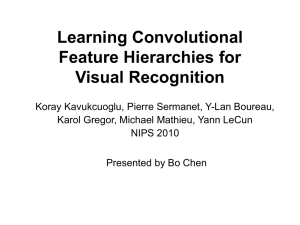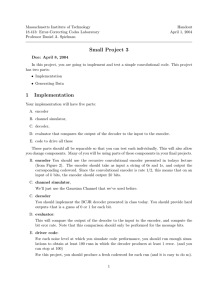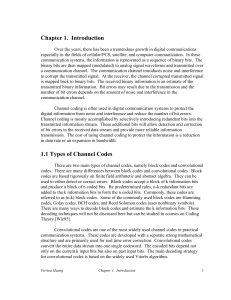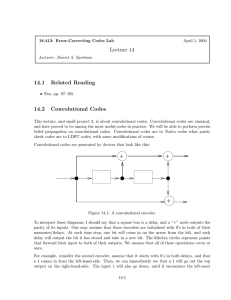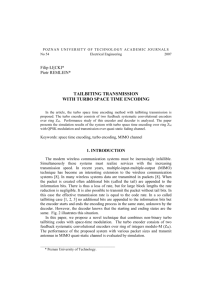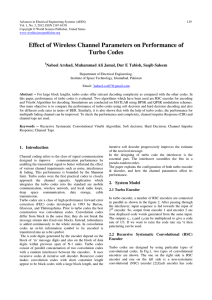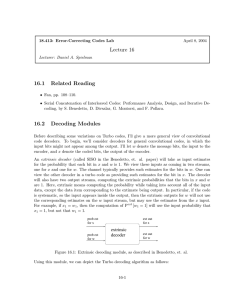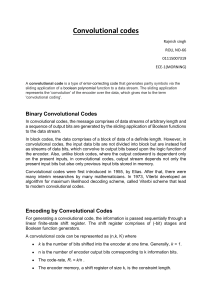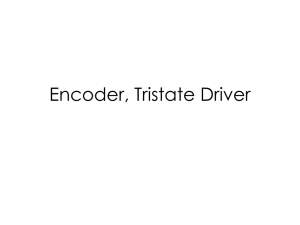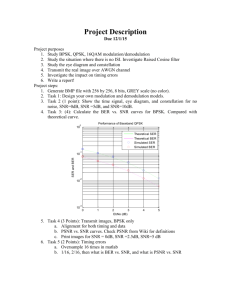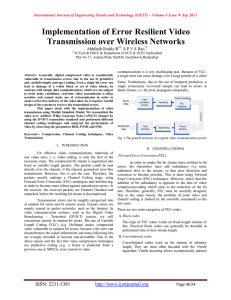Information theory and error control coding/Teoria da informação e
advertisement
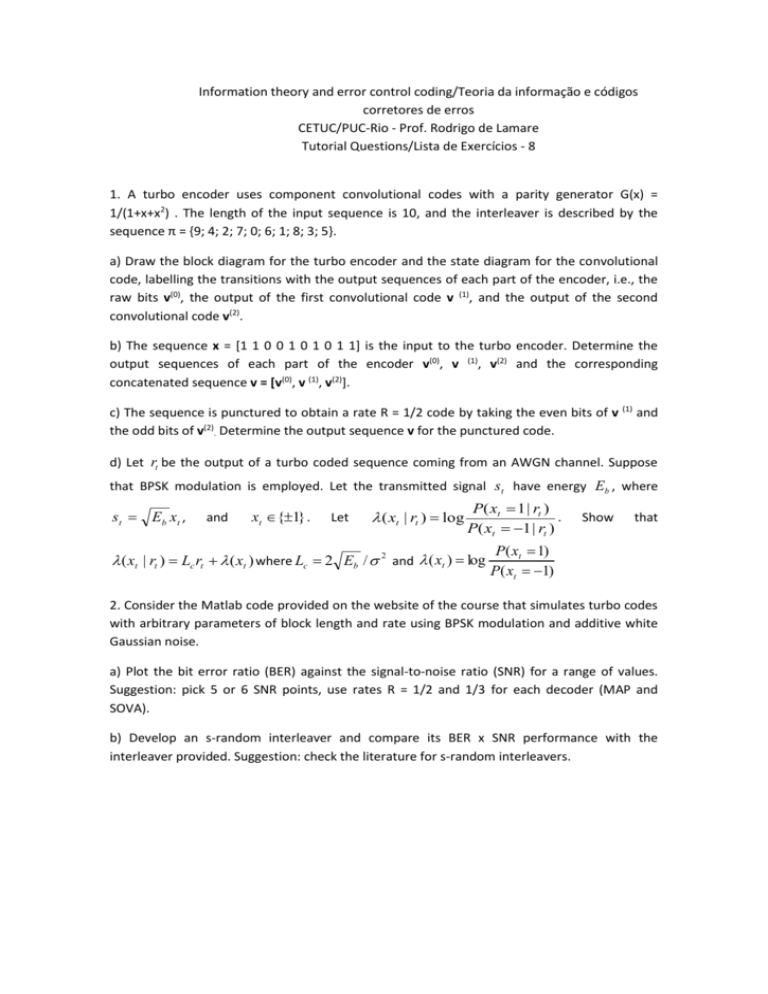
Information theory and error control coding/Teoria da informação e códigos
corretores de erros
CETUC/PUC-Rio - Prof. Rodrigo de Lamare
Tutorial Questions/Lista de Exercícios - 8
1. A turbo encoder uses component convolutional codes with a parity generator G(x) =
1/(1+x+x2) . The length of the input sequence is 10, and the interleaver is described by the
sequence π = {9; 4; 2; 7; 0; 6; 1; 8; 3; 5}.
a) Draw the block diagram for the turbo encoder and the state diagram for the convolutional
code, labelling the transitions with the output sequences of each part of the encoder, i.e., the
raw bits v(0), the output of the first convolutional code v (1), and the output of the second
convolutional code v(2).
b) The sequence x = [1 1 0 0 1 0 1 0 1 1] is the input to the turbo encoder. Determine the
output sequences of each part of the encoder v(0), v (1), v(2) and the corresponding
concatenated sequence v = [v(0), v (1), v(2)].
c) The sequence is punctured to obtain a rate R = 1/2 code by taking the even bits of v (1) and
the odd bits of v(2). Determine the output sequence v for the punctured code.
d) Let rt be the output of a turbo coded sequence coming from an AWGN channel. Suppose
that BPSK modulation is employed. Let the transmitted signal st have energy Eb , where
s t Eb xt ,
and
xt {1} .
Let
( xt | rt ) log
P( xt 1 | rt )
.
P( xt 1 | rt )
( xt | rt ) Lc rt ( xt ) where Lc 2 Eb / 2 and ( xt ) log
Show
that
P( xt 1)
P( xt 1)
2. Consider the Matlab code provided on the website of the course that simulates turbo codes
with arbitrary parameters of block length and rate using BPSK modulation and additive white
Gaussian noise.
a) Plot the bit error ratio (BER) against the signal-to-noise ratio (SNR) for a range of values.
Suggestion: pick 5 or 6 SNR points, use rates R = 1/2 and 1/3 for each decoder (MAP and
SOVA).
b) Develop an s-random interleaver and compare its BER x SNR performance with the
interleaver provided. Suggestion: check the literature for s-random interleavers.
